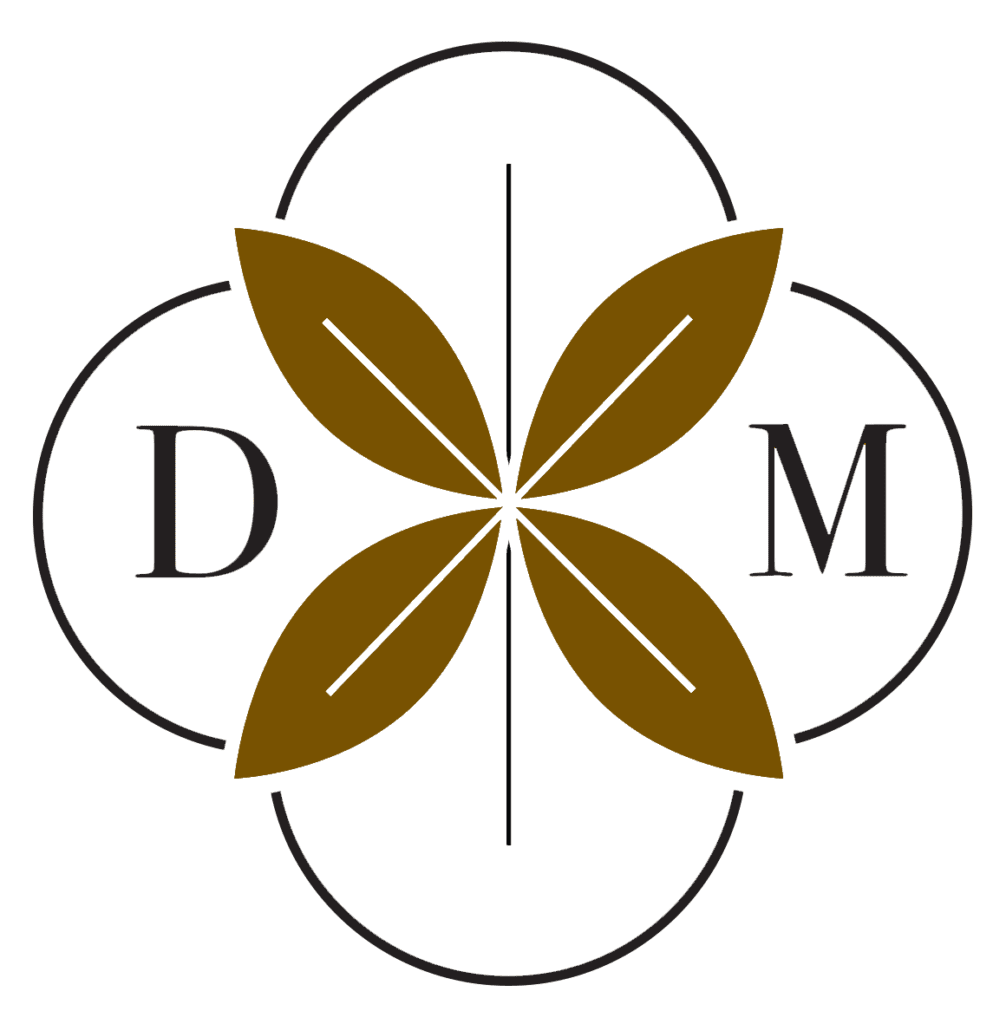By SHERRY LUCAS • Photos by MARK GEIL
To travel with Andrew Bucci, by way of the paintings he left behind, is to tap into the cool patterns, joyous colors and energetic buzz of the environments, and see them with new eyes.
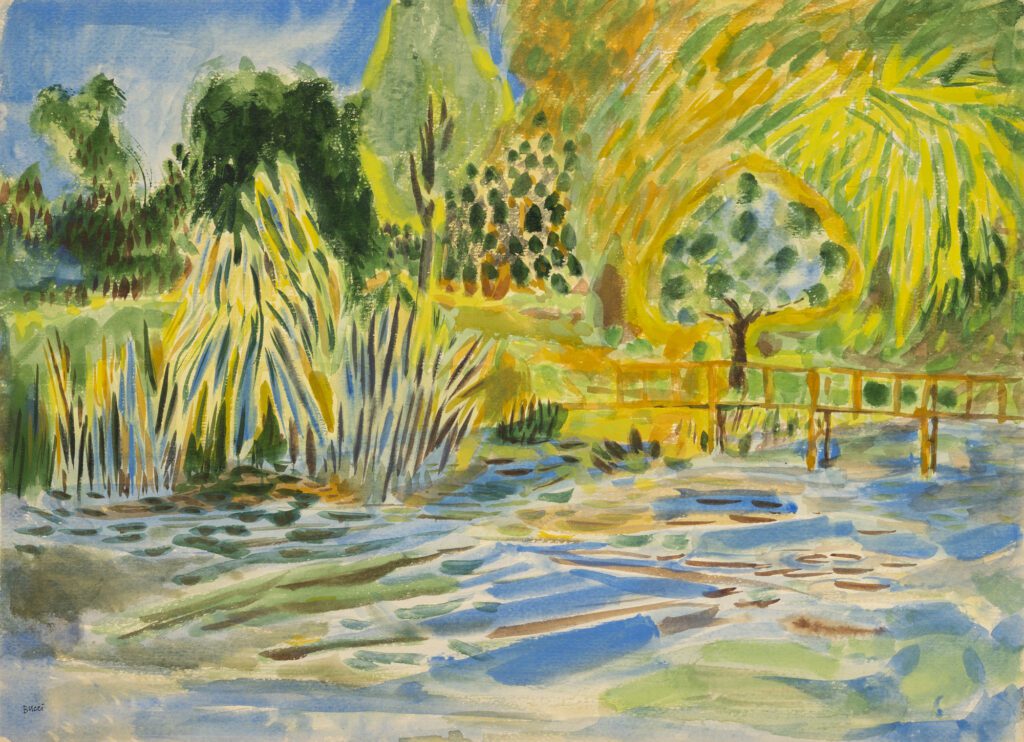
“In His Element: Andrew Bucci’s Explorations of Place” opened Sept. 3 at the Constitution Firehouse Gallery, 1204 Main St. in Vicksburg. The nearly month-long exhibition is hosted by the Vicksburg Art Association. Featuring about 65 paintings by the Mississippi artist, it’s among several exhibitions around the state and a suite of gallery shows that tie into this year’s centennial of Bucci’s 1922 birth in Vicksburg.
A public wine and cheese reception will be held Sept. 13 at 7 p.m., and “In His Element” remains on display through Sept. 25. The exhibition will be open Wednesdays through Saturdays from 10 a.m. to 4 p.m., and Sundays 1 p.m. to 4 p.m. during its run.
As centennial exhibitions targeted different aspects of Bucci’s art, “It made sense that this would be the perfect spot to feature the places that he painted,” says art appraiser and consultant Elizabeth Abston, who curated the exhibition. “He’s so well-known for his abstractions, and the figural paintings that merge into nature and abstraction, but I don’t think as many people … are as familiar with his scenes of cities and more defined places.
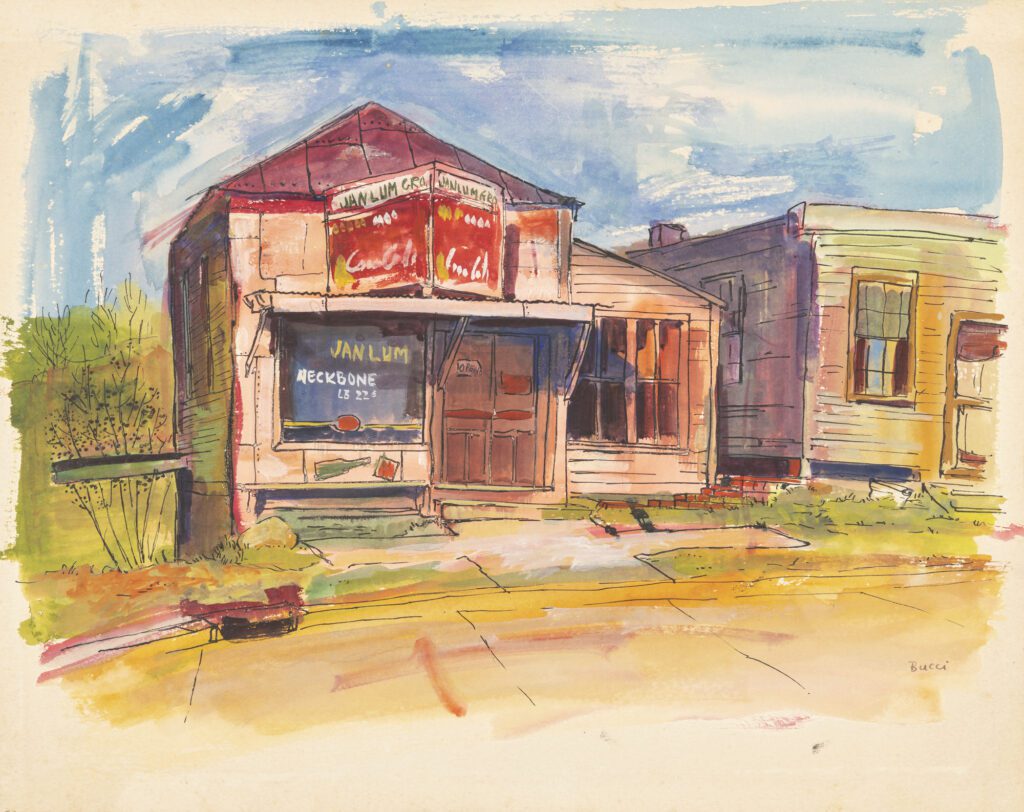
“Especially in the ‘50s and ‘60s, he spent so much time painting the places around him,” Abston says.
Bucci grew up in Vicksburg and came home to his native Mississippi at the very end, after a landslide in his Maryland neighborhood forced out residents. In October 2014, he settled into his new home in Vicksburg, but died that November. He was 92. Bucci had always kept a close connection with his home state, however, visiting family and friends such as artist Marie Hull and Allison’s Wells Art Colony founder Hosford Fontaine, and bringing art to galleries in Jackson and McComb.
“Wherever he lived or visited, he would paint,” often with the very portable watercolor on paper, Abston says.
In the show’s artwork, “His use of texture and pattern are really strong throughout,” she says, “and that carries over into his later works as well, when it gets a little bit more abstract. He really focuses on texture and movement and color,” paring it down to the interesting aspects of each object and then pulling it all together.
“It shows how he was really developing his own voice and absorbing what was around him.”

Among Abston’s favorites is a 1955 watercolor of Jan Lum’s grocery. “It’s one of those typical old Vicksburg buildings, that doesn’t exactly have all the right angles,” she says with a fond laugh. “It’s just a quaint Vicksburg scene that he captured.”
Bucci was well-traveled. As a young man in the military, destinations included New York City, England, Scotland and Paris. He studied art at Académie Julian in Paris, School of the Art Institute of Chicago and Parsons School of Design in New York City. Artworks in “In His Element” were done in the United States and range from early 1950s to the 2000s. They include mostly watercolors, with some gouache, colored pencil, charcoal, ink and oil on paper.
“He was about getting out and seeing things, definitely, and he brought his sketching and painting materials everywhere he went,” says Margaret Bucci, the artist’s niece and executor of his estate. “His artwork really was his journal.”
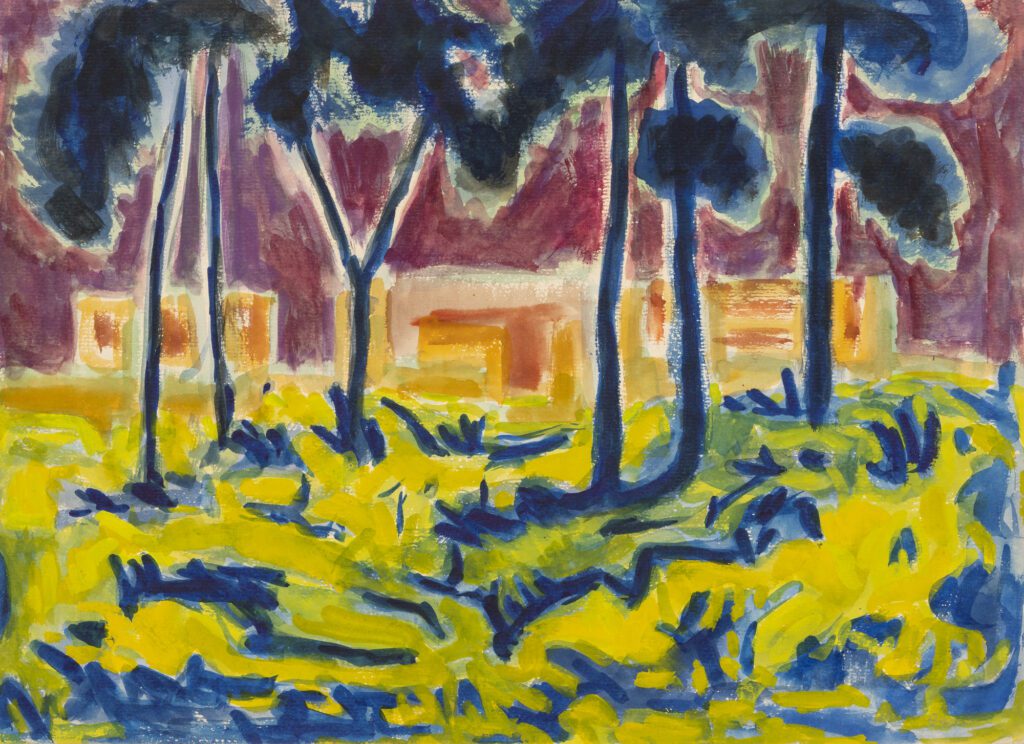
The show includes sketches of Monument Valley, paintings from around the District of Columbia and Maryland areas, cityscapes from Chicago and New York City, and scenes of Vicksburg and the Mississippi Delta, a region he loved, Margaret Bucci says. “I remember a quote … he said, ‘The Delta is like a sea of land. It has different moods.’
“Even in the winter, when it’s kind of bleak and all the fields are empty, I think he thought that was just as beautiful, just a different mood.
“I think he liked depicting the horizon line … that motif of the flatness, where he could put two planes of color together, and do a lot of variations of that.” A large painting on paper, “Delta Variation,” will be shown for the first time in Vicksburg. “It’s a big, fairly realistic Delta scene — realistic for Andrew,” Margaret Bucci says. “I think he liked messing with that horizon line, and moving it up and down, and depicting green and blue and brown. And, white — the cotton. He did several paintings of cotton in the field. … He was always looking to nature for inspiration.”
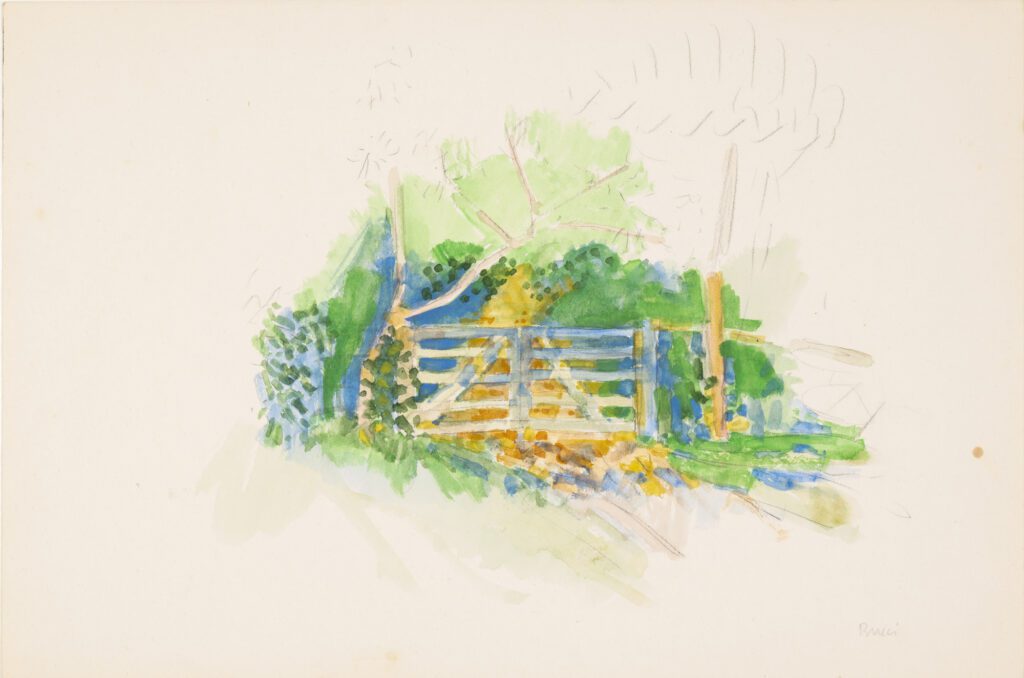
As the artist got older, he’d still travel north on U.S. 61 for the scenery, sitting in his car to sketch and paint instead of getting out. “He was not very stable on his feet, and he didn’t use a cane or a walker at times when he probably should have,” Margaret Bucci says. “He was doing that up until the last few months of his life.” He’d paint larger pieces from memory.
Some of Bucci’s Delta works are the finale pieces for “In His Element” — “these really big, flat, minimal landscapes of the Delta,” Abston says.
“He talked about, in landscapes, of getting things to a bare minimum, paring down the information,” Margaret Bucci says, noting that early landscapes with watercolor and ink are lush, with lots to see. “As the years went on … he was using fewer brushstrokes,” reducing things to a minimum, capturing its very essence.
Abston says, “He had this amazing way of seeing places from a different perspective, that I think was probably what made him such a great artist.”
